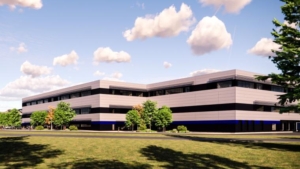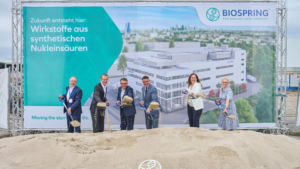
Transition to industrial-scale AAV manufacturing
The switch from lab-scale to industrial-scale AAV production requires deep hands-on expertise in various technological solutions, their limitations, and their suitability for GMP large-scale manufacturing. Direct application of lab-scale process leads to expensive AAV-based products and unnecessarily laborious industrial processes. The complexity and growing demands for controllable critical quality attributes (CQAs), create a challenging blend.
Broadly, AAV manufacturing consists of the upstream process, where producer cells, upon transfection, start generating proteinous and genomic components that self-assemble to form active AAV particles. Breaking cells to release AAVs marks the end of the upstream production and transition to downstream purification.
Numerous hurdles
Large-scale clinical AAV production poses numerous hurdles not visible in a preclinical scale. The early discovery phase typically utilises adherent cells, which at a scale translate to fixed-bed reactors. The expansion phase in the adherent cells process introduces variability due to difficulty in delivering consistent parameters such as pH, oxygen concentration, or cell distribution across multiple vessels. While fixed-bed reactors allow effective viral particle collection from the supernatant recovering AAV from biomass is more challenging. Depending on the serotype and harvesting time, about 20-40% of AAV particles remain in cells.
Optimizing the upstream
Biovian believes in its AAV platform process approach, where true scalability is possible with serum-free suspension culture in stirred tank bioreactors and a well-characterised in-house cell line. In suspension culture, volume dimension increases faster than surface area. Based on our experience, huge differences exist between HEK293 cell clones available on the market in their aggregation susceptibility, growth speed, and toxicity response to commercial transfection reagents leading to up to 10-fold titer differences. Above mentioned differences still do not consider the substantial effect on titer imposed by transfection conditions, plasmid ratios, the genetic background of plasmids, and plasmid quality. Our in-house plasmid production allows a comprehensive understanding and control of each quality attribute that converts into consistency in AAV manufacturing. Simultaneously, we generated a well-defined upstream process design space using the Design-of-Experiments methodology to control production with titers >1014 vg/l or >105 vg/cell. The suspension process has lower cell densities per volume than adherent cultures and can be further intensified by perfusion, with transfections possible even at 9×106 cells/ml and titers improved by 5-10-fold.
Purification in downstream
The small-scale downstream process utilises problematic procedures such as cell collection by centrifugation, freeze-thawing to release AAV from cells, or centrifugation to separate empty AAVs. Through our AAV platform process philosophy, we focused on scalable chromatography. We achieved a uniform affinity chromatography process that produces stable >80% recovery with multiple serotypes. When looking at empty-full AAV separation, a typical preclinical scale cesium chloride and ultracentrifugation-based separation generates challenges in upscaling. We tackled scalable anion exchange chromatography and developed a robust protocol allowing stable baseline separation of empty and full AAV particles regardless of therapeutic gene size and serotype. The compatibility with large-scale should happen early to deliver low-cost, high-quality products.
This article was originally published in European Biotechnology Magazine Spring Edition 2023.


 https://www.chimia.ch/chimia/article/view/2025_292
https://www.chimia.ch/chimia/article/view/2025_292 Sandoz
Sandoz BioSpring
BioSpring